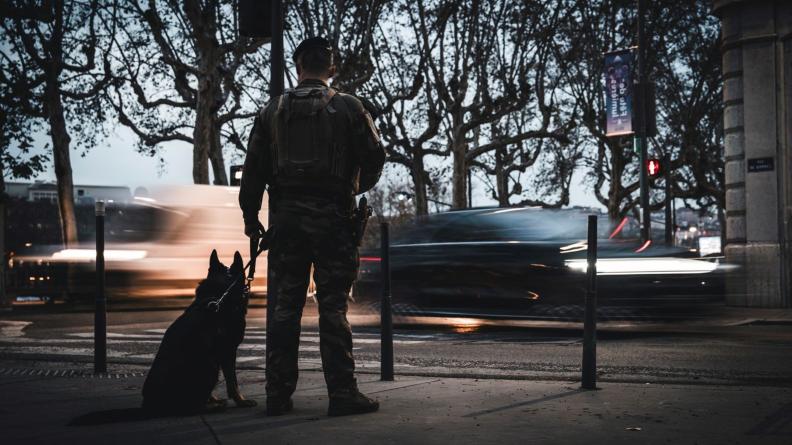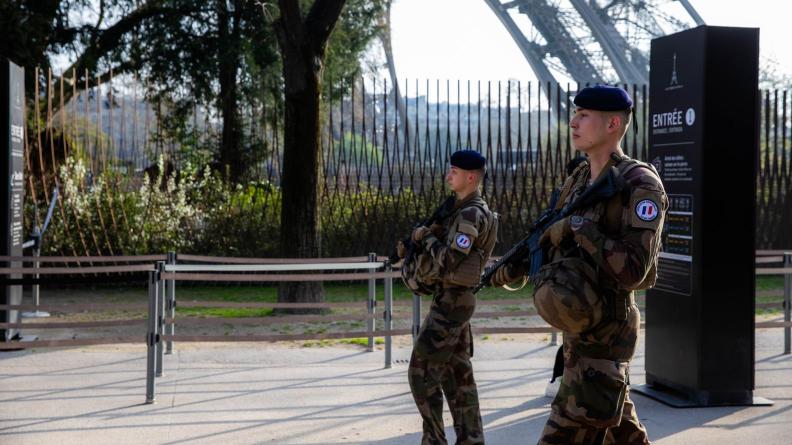Securing the airspace during the 2024 Olympic and Paralympic Games: permanence and reactivity at the service of the French population
The Air Defence and Air Operations Command (CDAOA) is in charge of the permanent air security posture (PPS-A) via its dedicated unit, the National Air Operations Centre (CNOA).
As a permanent priority mission of the Air and Space Force, this system ensures the sovereignty of the French airspace by detecting, identifying and intercepting any intruder in the national sky at very short notice. In the framework of the 2024 Olympic and Paralympic Games, the Air and Space Force will be reinforcing these resources by setting up a special air security system to guarantee air protection for the event.
Every day, more than 12,000 aircraft pass through the French airspace. Each of these aircraft is detected, identified and then classified. This is the raison of the meshed surveillance network covering the whole of France and its approaches. Thanks to a network of nearly seventy civilian and military radars, the three military detection and control centres spread across the country detect aircraft transiting through their areas of responsibility.
Any aircraft detected in our airspace is hence identified according to its type, nationality, the type of ownership (private or state-owned), owner, origin and destination. Aircraft are then classified according to their profile. This active surveillance enables us to constantly assess the level of threat. Any anomaly in the flight plan or the behaviour of an aircraft leads to the implementation of measures adapted to each situation.
When a major event such as the Olympic and Paralympic Games requires increased protection of the skies, a special air security system is put in place. Also known as a "protective bubble", it generally comprises a temporary no-fly zone for all unauthorised aircraft, and a temporary restricted zone with controlled access.
The impermeability of the system is ensured by the use of additional detection capabilities such as ground-to-air defence, AWACS surveillance aircraft, tactical radars and visual lookouts. Detection capabilities are complemented by intervention assets capable of acting across the entire threat spectrum. These include Rafale and Pilatus PC21 aircraft and Fennec helicopters, which can intercept at very short notice any suspicious aircraft threatening the French territory.
Furthermore, within the special air security system, the French Air and Space Force is also responsible for anti-drone operations and the coordination of air traffic at very low altitudes, in liaison with the civil authorities. Indeed, to deal with this growing threat, it is vital to rapidly detect and classify all flying objects, so as to identify potentially hostile aircraft in the mass of objects.
With the prospect of a significant increase in special air security system activities up to 2024, the French Air and Space Force has acquired its third BASSALT detection system, an anti-drone system based on artificial intelligence enabling it to become more efficient with each deployment. This system is under the command of the High Air Defence Authority, which reports directly to the Prime Minister.
Drawing on its experience, the Air and Space Force has tested its special air security arrangements in 2023 during major events such as the 14th July parade, the Pope's visit and the 2023 Rugby World Cup and will continue to strengthen its capabilities right up to the launch of the Olympic and Paralympic Games.
Related contents
Military dog-handling teams will help securing the Olympic Games
As part of the security arrangements for the 2024 Olympic and Paralympic Games, military dog-handling teams are contributing in the same way as other army specialities to supporting the domestic security forces throughout France.
May 02, 2024

The land-based security aspect of the Olympic and Paralympic Games
The French Armed Forces are providing sizeable and deterrent support to the security arrangements put in place on the French territory for the 2024 Olympic and Paralympic Games. Their main mission is to guarantee an effective response at all times to a militarised terrorist threat. As part of the current Operation Sentinelle, which has been extended to meet the specific needs of the Olympic Games, the armed forces are providing their expertise in support of the domestic security forces.
April 24, 2024

The Anti-Drone fight: A Key Interdepartmental Mission in Air Security for the 2024 Olympic and Paralympic Games
The French Air and Space Force is responsible for the air component securing the 2024 Olympic and Paralympic Games (OPG). The anti-drone fight constitutes a separate mission, jointly carried out by the military and domestic security forces who combine their resources in this specific field. In this regard, the French Air and Space Force ensures the integration of resources from various ministries, standardization of procedures, and coordination of action.
April 15, 2024